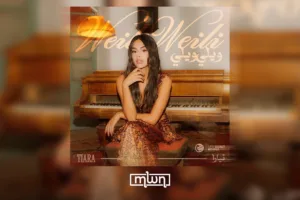Rabta – The 7th session of UNESCO’s intergovernmental committee for the safeguarding of the Intangible Cultural Heritage is taking place in the Kasbah of the Udayas in Rabat, Morocco, between November 28 and December 3.
Morocco’s Minister of Youth, Culture, and Communication, Mohammed Mehdi Bensaid, presided over the opening ceremony, which was attended by Morocco’s ambassador to the United Nations, Samir Addahar among others.

Morocco’s Minister of Youth, Culture, and Communication Mohammed Mehdi Bensaid
Different countries have submitted 46 cultural heritage projects to take part in the event.
Morocco’s King Mohamed VI sent a message to participants and emphasized in his address the necessity to maintain and protect national cultural heritage, which is sometimes appropriated by other countries.
During this event, Morocco and UNESCO signed an agreement to train experts from 12 African countries on how to protect world heritage sites and add new editions to the heritage list.
The agreement was signed by the Minister of Youth, Mehdi Bensaid, and the Director-General of UNESCO, Audrey Azoulay, as part of the event. The purpose of the agreement aims to let countries in sub-Saharan Africa use Morocco’s knowledge of how to protect their cultural assets.

Moroccan Caftan and head jewelry
In a statement to the press, Bensaid named the partnership “important” saying, “Morocco has great expertise in the area of tangible and intangible heritage as a result of the policies it takes under royal patronage.”
He also stressed that “the choice of the city of Rabat to host the proceedings of this conference is not a random decision; it is a testament to the great cultural impact of this venerable city, a center of the world’s cultures.”

Moroccan Caftan and Mejdoul
Azoulay expressed her “most sincere” thanks to King Mohammed VI for “his commitment to safeguarding culture,” and for his multilateral actions in promoting peace.
Celebrating Caftans, Amazigh Culture
On the second day of the UNESCO committee session on November 29, there was an exhibition on the Moroccan caftan and Amazigh culture and language.
Mehdi Bensaid opened the exhibition of the Moroccan caftan at Bab Lekbir in the Kasbah des Oudayas in Rabat, in the presence of the Guatemalan Minister of Foreign Affairs and Carlos Raul Morales Moscoso and his deputy, the Deputy Minister of Culture of Albania Elva Margariti, including ambassadors of several countries at UNESCO

Minister of culture of Albania Elva Margariti
The activities of the second day of the meeting of the intergovernmental committee for the safeguarding of the intangible cultural heritage also featured the organizing of a workshop on the culture and language of Amazigh.
The Moroccan caftan is a traditional Moroccan women’s dress that is worn during ceremonies (weddings, baptisms, and religious festivals). It is considered one of the world’s oldest traditional garments.

Moroccan Caftan in full display
The Moroccan caftan has been more symbolic of women’s delicate taste in traditional clothes. Brides have also worn it during their weddings to accentuate their beauty and femininity.
The Moroccan caftan continues to be an important constituent of Morocco’s cultural identity. The caftan is the pride of every Moroccan woman. It symbolizes her simplicity and sophistication; her femininity and beauty; her cheeriness and delicacy; and her colorful and open mind.
The caftan is a symbol of Moroccan fashion, which is recognized worldwide; the traditional dress is a timeless item of clothing.

Participants from across the world at the event
Read also: Morocco Ramps Up Efforts to Safeguard Its Intangible Heritage
















